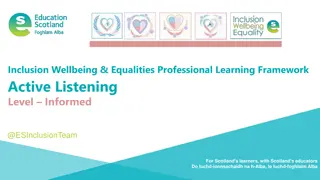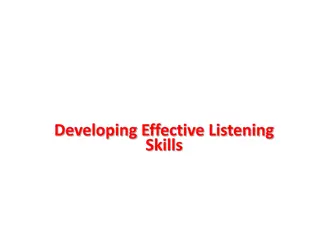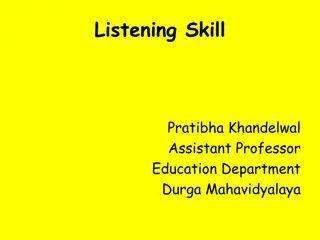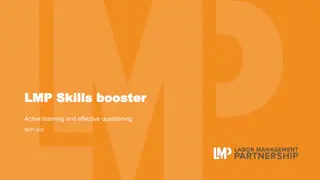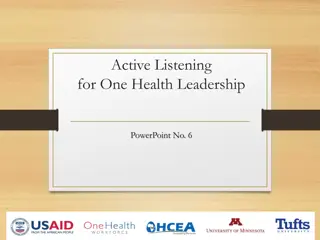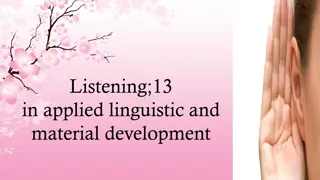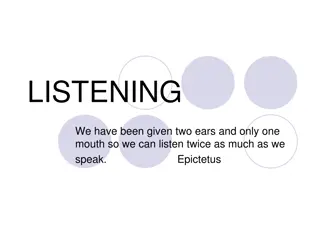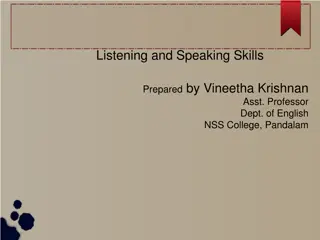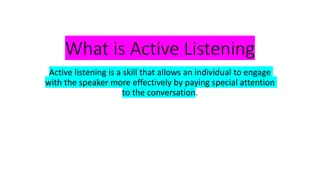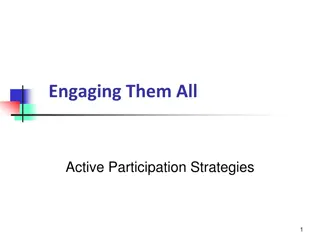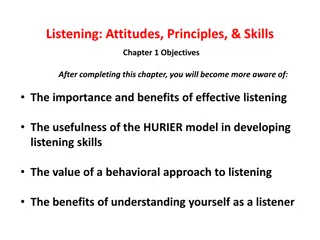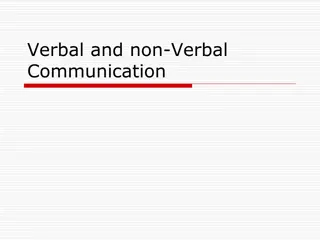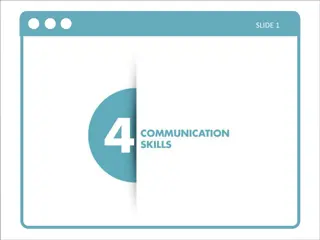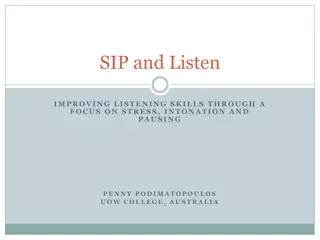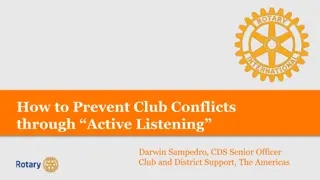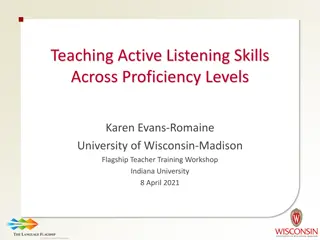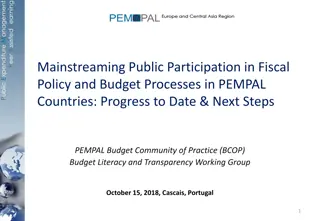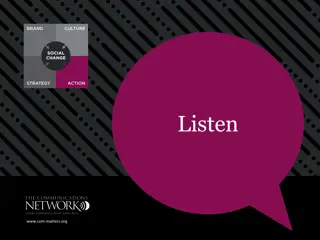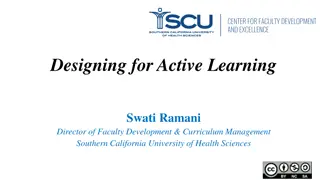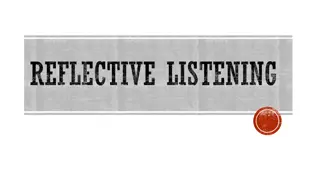Enhancing Children's Participation through Active Listening and Engagement
Recognizing children as active contributors in decision-making processes is crucial. Encouraging their voices, opinions, and perspectives through methods like child conferencing, using cameras for photography tours, and creating maps can offer insights into their world and promote meaningful participation.
Uploaded on Aug 24, 2024 | 0 Views
Download Presentation

Please find below an Image/Link to download the presentation.
The content on the website is provided AS IS for your information and personal use only. It may not be sold, licensed, or shared on other websites without obtaining consent from the author. Download presentation by click this link. If you encounter any issues during the download, it is possible that the publisher has removed the file from their server.
E N D
Presentation Transcript
Learner Participation
UN Convention on the Rights of the Child (1989), Article 12 States parties shall assure to the child who is capable of forming his or her own views the right to express those views freely in all matters affecting the child, the views of the child being given due weight in accordance with the age and maturity of the child.
Listening and childrens participation Listening is about treating children as respected human beings. (Rinaldi, 2011) The recognition that children are active in the process of shaping their lives, learning and future. They have their own view on their best interests, a growing capacity to make decisions, the right to speak and the right to be heard (Woodhead, 2010)
age alone should not be used as a metric to determine the weight given to children s views parents, professionals, and other responsible authorities must create opportunities for young children to express their views. Trust in young children s ability to think creatively Enjoyment and excitement in working cooperatively with young children Confidence that participation is vital and rewarding (Alderson 2008, p.141)
How do we listen to children Observations Child conferencing Mind maps Voting Choosing books Photograph and video tours Map making Role play
Using child conferencing to listen This is a short, child-focused interview. Questions include why do you come to nursery? , what do you like best? who are your favourite people? etc. It can reveal children s relationships with peers and staff, favourite places, least favourite places, difficult things and favourite activities.
Using cameras to listen Asking children to photograph important things reveals their perspective of the environment, including friends, staff, resources, furniture, routines and own work. Child-led photograph/video tours allow them to talk freely about their environment and can present a way of moving towards a child agenda for change.
Using maps to listen A two dimensional representation, connecting children s physical experiences of their environment. The children s photographs can be used to connect their ideas. This method helps clarify children s priorities. Children see their ideas are valued.
Listening is about being able to hear the ideas and theories of the child, and to treat them seriously and with respect, neither ignoring them nor dismissing them for not providing the right answer


